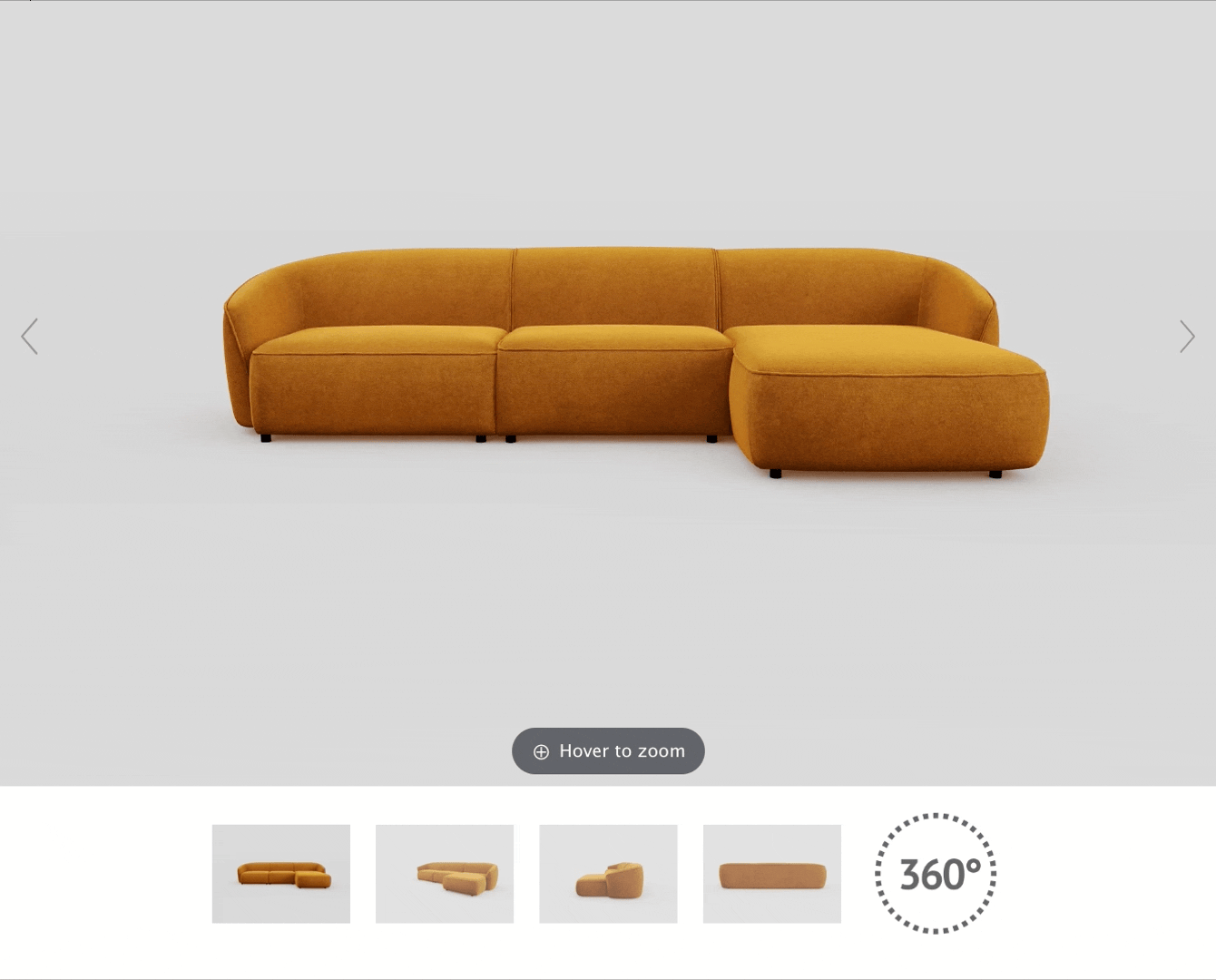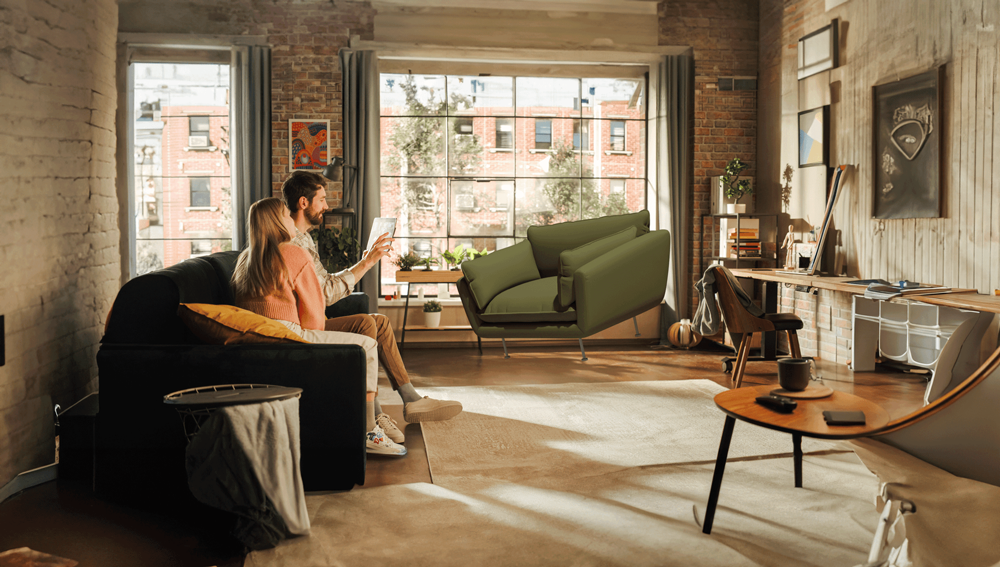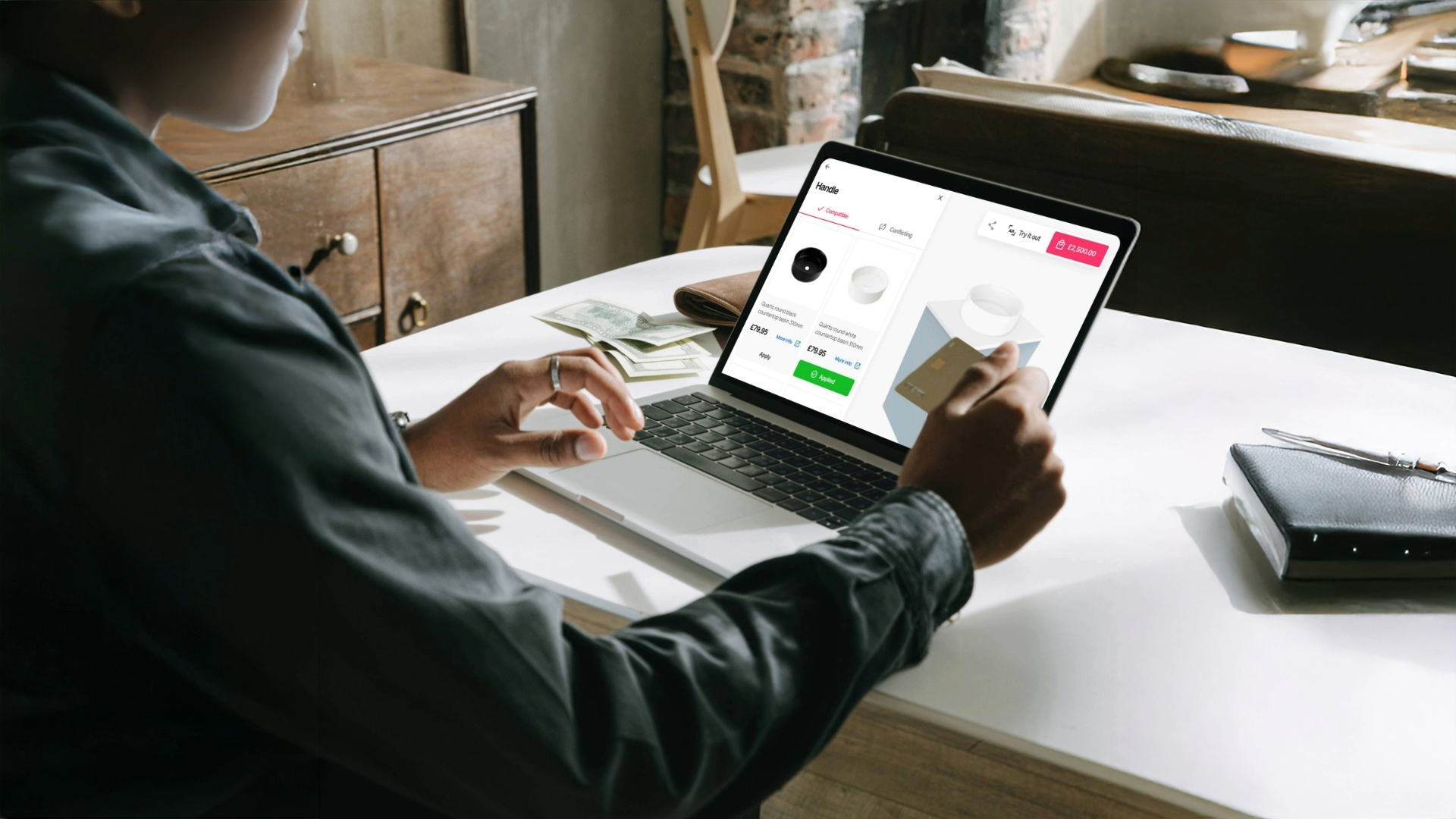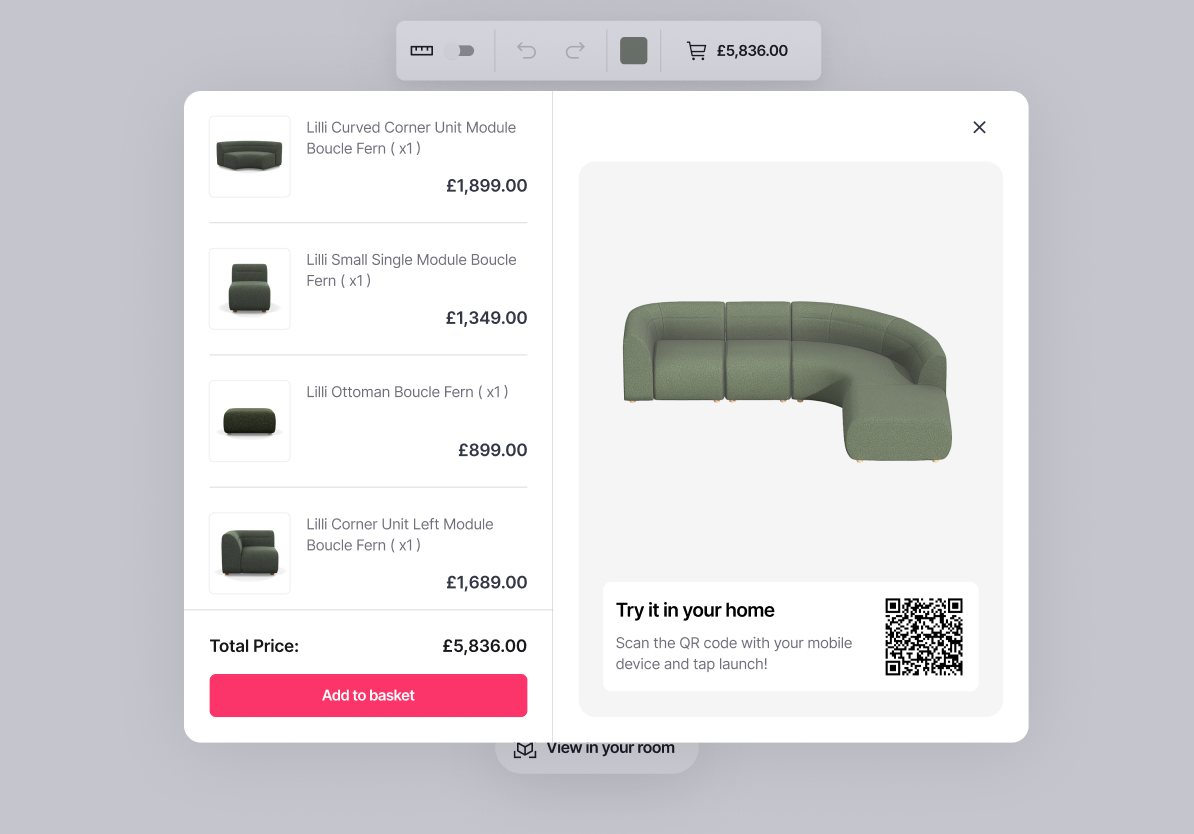In standard e-Commerce, shoppers rely on static photos or maybe a 360° spin. But that still forces them to imagine many aspects: how light hits surfaces, how different combinations will look, and whether proportions will feel “right.” 3D visualization (and especially interactive 3D configuration) bridges that gap by letting the user explore a product as if it were in their hands.
Data supports this leap in fidelity. Shopify reports that merchants who use 3D/AR content on product pages see an average 94% increase in conversions versus those without 3D/AR. Industry roundups echo this and also note lifts in purchase intent and engagement when 3D assets are present.
Alongside third-party studies, Fixtuur and London Research found that leaders in furniture retail are more likely to use integrated AR and high-quality CGI across the product journey, correlating with stronger sales performance and customer satisfaction.
Beyond raw numbers, the core advantage is certainty. When a buyer can inspect from all angles, try alternate finishes, see realistic lighting, and test size context (via AR or a room plan), the “surprise factor” is reduced. That’s especially valuable for higher-consideration categories (e.g. furniture, bathroom fittings, décor, and custom goods) where unexpected outcomes drive returns.
Furthermore, 3D content helps with differentiation in a crowded market. If your site offers an immersive, configurable experience that rivals, or even surpasses, the tactile in-store feel, it becomes a strong selling point in itself. From a technical perspective, well-optimized WebGL/WebXR pipelines ensure 3D content loads smoothly across devices, while a laggy 3D experience is probably worse than a poor 2D image.
In sum, 3D visualization gives clarity, confidence, engagement, and distinction, which is exactly what modern e-Commerce needs to compete.

Enabling interactive choice: color, finish, size, AR & room previews
A 3D configurator is more than a viewer: it’s a toolkit for exploration and personalization. Here’s how the feature set drives value:
Multi-option toggles and instant visual feedback
Let users switch colors, materials, textures, trims, optional features, bundles, add-ons, and more, instantly reflected on the same 3D model.
It’s enormously more compelling than trawling through endless product pages or dropdowns on 2D mock-ups, and gives clarity on how combinations look together. You can also enable pattern swaps, finish types (e.g. matte vs. gloss), or switch elements out for other products to get to your desired look.
Full spatial control: rotation, zoom, exploded views
Beyond toggles, users expect to rotate, zoom, pan, separate components, or view cross-sections. This lets them scrutinize joinery, internal cavities, structural elements, or modular fittings. For complex ranges, a 3D Modular Configurator can be useful as well to make assembling multi-piece sets intuitive and error-free.
Room placement & AR integration
Dropping the configured object into the user’s space via web-based or app-based AR is one of the most powerful extensions. Shopify cites an average 94% conversion lift when 3D/AR is used on product pages; case studies also show reduced return rates when customers verify fit and scale at home (e.g, ~5% reduction in some deployments).
Room planners or “interior mock-ups” let users build scenes, pick wall colors, and floors, to then place the configured items into their space. Explore our 3D Room Planner and our explainer on 3D room design for more information on full room visualization.
Scalability via rules engines & variant logic
Behind the scenes, a rules engine ensures customers only pick viable configurations (no incompatible finishes or parts). That safeguards production, shortens lead times, and prevents customer frustration. And because everything is configured virtually, you can offer make-to-order flexibility without stocking every variant.
Engagement and dwell time
Configurators keep users on the page longer, signaling strong intent for both conversion and SEO. Independent industry roundups report high activation rates for 3D viewers and material lifts in interaction time when 3D assets are present. Our own customers typically see major boosts in product engagement when shoppers can configure, preview in AR, and plan a room in one flow.
Pro tip: Link configurators with AR and room planning so shoppers can move from “design” to “decision” in a single session. That’s the “choice & confidence” effect in action.

The psychology of attachment and decision certainty in 3D
Beyond UX and tech metrics, there’s a psychological layer that makes 3D configurators potent.
Ownership effect & endowment bias
When a user configures a product (personally choosing color, finish, and add-on), they feel a sense of co-creation. That investment makes the product feel theirs. The more time they spend customizing, the harder it is to walk away, thus boosting conversion momentum.
Reducing cognitive friction and decision stress
Buying online often involves uncertainty and second-guessing. Configurators reduce mental load: users don’t need to imagine combinations or open multiple tabs side by side. Instead, they can see them instantly, undo, compare, and verify. Dimension overlays, AR, and room placement minimize the “will it fit/look right?” fear, which can lead to pre-purchase remorse (one of the biggest blockers for furniture, home décor, and fixture e-Commerce).
Emotional resonance & visual storytelling
High-fidelity 3D visuals evoke stronger emotional responses than flat images. The configured product becomes “part of my life,” especially when previewed in context (a customer’s own room, at scale). This translates into higher satisfaction post-purchase and fewer returns, with multiple case studies noting meaningful return-rate reductions alongside conversion lifts.
Upsell & cross-sell receptivity
Once confidence and emotional connection rise, shoppers are more open to premium finishes, accessories, and bundles that are presented visually in the 3D configurator rather than as abstract add-ons. This gently increases AOV without adding friction.
Next steps
-
Check out Fixtuur's 3D Configurator and 3D Modular Configurator
-
Combine with Augmented Reality and the 3D Room Planner
-
Feed configurators with premium CGI via our Visual Content Pack and 3D model creation services
-
Read more: 5 reasons retailers invest in 3D & AR
Ready to elevate buying experiences with 3D configuration?
For more information on how Fixtuur can help your retail business integrate these cutting-edge technologies speak to one of our experts.


